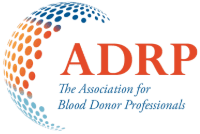A randomized controlled trial of post-donation communication materials to increase donor return following a vasovagal reaction
Full article available for purchase
Authors
Amanda Thijsen, Carley N. Gemelli, Tanya E. Davison, Barbara Masser
Abstract
Background
Vasovagal reactions (VVRs) are one of the primary reasons for people to stop donating blood. The aim of this study was to evaluate the impact of newly developed online communications on the rate of return of whole-blood (WB) and plasma donors who experienced a VVR.
Study Design and Methods
First-time and experienced WB and plasma donors who had a VVR without a loss of consciousness in the previous 3 days were randomly allocated to receive (a) an SMS sent 1–4 days post-VVR (n = 2303), (b) an email sent 6–10 days post-VVR (n = 2360), (c) both the SMS and the email (n = 2248), or (d) business-as-usual donor retention communications (control; n = 2557). Donation data were extracted to determine subsequent donation attempts.
Results
For return within 3 months, WB donors in the Email Only condition had significantly increased odds of returning (OR: 1.26, 95%CI: 1.01–1.56). Subgroup analysis within WB donors showed increased odds of return for women sent the SMS and Email (OR: 1.50, 95%CI: 1.14–1.96) or the Email Only (OR: 1.44, 95%CI: 1.10–1.89), and for first-time donors sent the Email Only (OR: 1.48, 95%CI: 1.07–2.05). At 6 months, only first-time WB donors in the Email Only condition had significantly increased odds of returning (OR: 1.30, 95%CI: 1.01–1.69). No significant effects of the intervention were found for immediate or intermediate return for plasma donors.
Discussion
Sending an email addressing common donor concerns regarding VVRs increases WB donor retention, but additional strategies are needed for the effects to last and to retain plasma donors.
July 26, 2023
Related Resources
Engaging blood donors as advocates Social media preferences and associations with marketing
Background: Various critical medical procedures would become impossible without blood donations—saving lives in emergencies, surgeries, and chronic conditions like thalassemia. Therefore, it seems crucial to enhance donor recruitment and ensure…
Rethinking the role of older donors in a sustainable blood supply
INTRODUCTION Many countries, particularly high human development index countries, are facing the challenge of an aging population.1 For Blood Collection Agencies (BCAs) in these countries, an aging population poses two…


